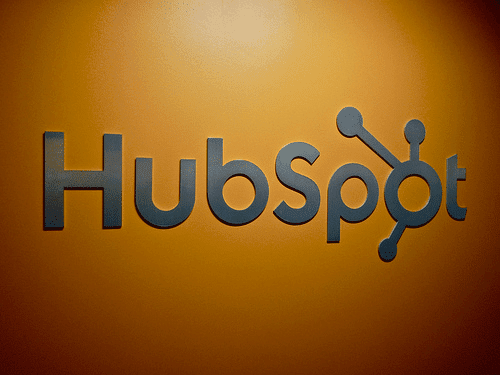Marketing attribution is one of the hardest challenges we face as marketers. A prospect can have anywhere from one to hundreds of touch-points before making a purchasing decision. In order to optimize ROI, marketers need to identify the effectiveness of their campaigns and figure out which channels are actually driving revenue. Here we explain the premise behind attribution as well as some tips further below.
What is Attribution?
Attribution refers to measuring the effectiveness of the marketing interactions a prospect has with a brand. Simply put, the goal of marketing is to convert prospects into customers. The process of doing so requires a marketing mix of various channels such as paid ads, content creation, email campaigns, in-person events, and social media. After a marketing mix is deployed, marketers need to look back and evaluate what is working, what is not, and ultimately, what is driving customer acquisition. Here is where attribution comes into play.
Today, attribution continues to increase in complexity as the digital marketing landscape promotes more fluid prospect-brand interactions within an individual buyer’s journey. According to an MIT Sloan article, “The reality of customer-brand relationships today is that they have evolved from single, interspersed interactions to always-on, symbiotic, and immersive relationships.” This makes attribution particularly complicated because customer acquisition comes from a blend of touchpoints with varying degrees of influence. Therefore, marketers rely on models to best quantify the various elements of a marketing mix and give the appropriate credit to the most effective channels.
Attribution Models
- First Interaction
- Credit is given to the first interaction a brand has with a customer. This model works best for companies with high lead-to-customer conversion rates. If the marketing team identifies that once a lead is generated, a purchase will likely be made, then the emphasis of the marketing mix should focus on which channels are generating traffic and leads.
- Last Interaction
- Last interaction modeling gives credit to the last marketing touchpoint a customer has before converting. For example, a prospect clicks on a google ad which leads to a form fill. If that prospect remains a lead until finally converting through a nurture track email, most or all of the credit will go to the converting email. This works well for businesses that generate consistent leads, but have low lead-to-customer conversion rates.
- Example: A customer has 25 interactions, but finally converts after attending an in-person event and make a $50,000 purchase. $50,000 is attributed to the event.
- Linear
- Linear models give equal credit to all touchpoints. If a customer has 20 interactions with a brand before converting, then the credit will be split equally. Linear models are useful for simplifying attribution; however, they can also be misleading. If one touchpoint was a newsletter email and another was an expensive, in-person event, under the linear model, both would get equal credit even though the cost and value of each interaction may differ.
- Example: A specific customer acquisition led to a $200,000 purchase recorded as revenue. If that customer had twenty touchpoints, each individual touchpoint would be attributed to $10,000 in revenue.
- Time Decay
- Similar to a last interaction and linear model, time decay attribution gives increasing credit to touchpoints closer to the conversion.
- Example: A prospect clicks on a Facebook ad, downloads a white paper, and then watches a webinar leading to a $6,000 purchase. $3,000 is attributed to the webinar, $2,000 to the white paper, and $1,000 to the Facebook ad.
- U-Shaped
- U-Shaped modeling values the first and last converting touchpoints. This model works well considering the type of content used to acquire a lead often differs from content used to convert a lead into a customer.
- Example: Customer watches and clicks on a Youtube ad, reads a promoted blog post, downloads a free demo, and then attends a webinar leading to a $1,000 purchase. $500 is attributed to the Youtube ad and webinar while $250 is attributed to the blog post and free demo promotion. This can also be $500 each for the YouTube ad and webinar.
- W-Shaped
- Similar to a U-shaped model but also values the touchpoint that leads to a conversion within the buyer’s journey. This model attributes revenue to the first and last touchpoint as well as any touchpoint that changes lifecycle stage (i.e. lead to MQL). The percentage distribution can vary, but generally speaking, 25% or 33% goes to the first, last, and converting touchpoint(s).
- Custom/Algorithmic Model
- Algorithmic modeling is a custom approach to a specific business and is ultimately the most advanced type of attribution model that utilizes the concepts of the previous models into one approach that aims for the greatest level of accuracy. Algorithms work best when attributing multiple touchpoints with more specific ratios.
A Prism-Based Approach
In a perfect world, marketers would quantify marketing efforts into a single number. While most attempt to do this, it is impossible to achieve 100% accuracy. Rather, the most useful attribution analysis comes from a combination of automated quantitative attribution with a qualitative, broad analysis. In digital marketing, clicks are not always equal, and certain lifecycle stage conversions hold different weights based on the specific product or service. With this in mind, accurate attribution is best achieved in the context of a prism.
Prisms present different visuals based on the angle one looks through. By looking at the data through multiple models and perspectives, a marketer has a much better chance at gaining significant insights and accurate conclusions. How do the attribution reports change under different models? Are there clear patterns that can be deciphered?
As an example, let’s say a first interaction model shows paid search channels drive the most revenue, but a last interaction model shows webinars drive the most revenue. Meanwhile, the monthly in-person event generates low returns through any model. What does this mean? Well, paid search is driving traffic and leads, webinars are converting leads into customers, and events are under-performing to do either. This is a highly simplistic approach, but it is essential to look at data through all angles.
Data Is Everything.
The most critical component to attribution is an efficient mechanism to collect and visualize data. Poor data under the best models will still generate poor results.
Tip #1: Invest in a CRM (Customer-Relationship Management) and a MAP (Marketing Automation Platform).
A customer-relationship management platform, such as Salesforce or HubSpot, allows marketers to easily record and store activity data for thousands of leads and customers. When synched with a MAP such as Pardot, Marketo, or Hubspot, marketing touchpoints can be recorded with every lead, and attribution reports can be created within the platform. Note: In order to successfully track every interaction, both the CRM and MAP should be handled by an experienced professional familiar with automated data collection and custom reporting.
Tip #2: Consider the Buyers’ Journey when creating an attribution report.
As mentioned earlier, different stages within the buyers’ journey call for different marketing channels and touchpoints. If specific channels such as paid search, paid social, and organic search are driving traffic and creating leads, but not converting leads into customers, that should be taken into consideration in revenue attribution. The models listed before are merely a guide to presenting an accurate portrayal of the revenue creation for each marketing channel. The distribution of credit should correlate directly to the value of the conversion. The more difficult it is to generate leads, the greater the value of the touchpoints that create leads, and vice versa for lead-to-customer conversion.
Tip #3: Think Carefully About Your Naming Conventions.
When analyzing data within a CRM, marketers should be able to clearly identify the specific touchpoint based on its name within the report. For example, it is very common for automated marketing emails to be listed similar as “11.23.19WF-Nurture1.” One may be able to identify exactly which email that is referring to at the time, but six months later when evaluating campaigns, that name is going to lead to multiple headaches. Rather, make sure to refer to the campaign name, channel type, and content. This will make reporting much easier. Instead of “11.23.19WF-Nurture1,” try something similar to “Fall2019-NewsletterNurture-WeeklyTips-E1.” The exact naming convention will depend on the campaign and the rest of the marketing mix, but an emphasis on consistent, clear naming conventions is key.
Tip #4: Keep it Simple
Don’t let perfection be the enemy of the good. Quality attribution reports take time, trouble-shooting, and experience. Start by focusing on clear, easy-to-understand data, and then worry about attributing the marketing mix to revenue. Keep campaigns very simple and slowly expand the variety of marketing channels. It is not always necessary to have social, paid search, email newsletters, in-person events, retargeting, and more happening all at the same time. If the company or client is large enough to regularly utilize many channels at the same time, then focus your attribution on specific campaigns. It doesn’t happen overnight, but with time and consistency, everything should eventually all come into play in a clear and very insightful way.




